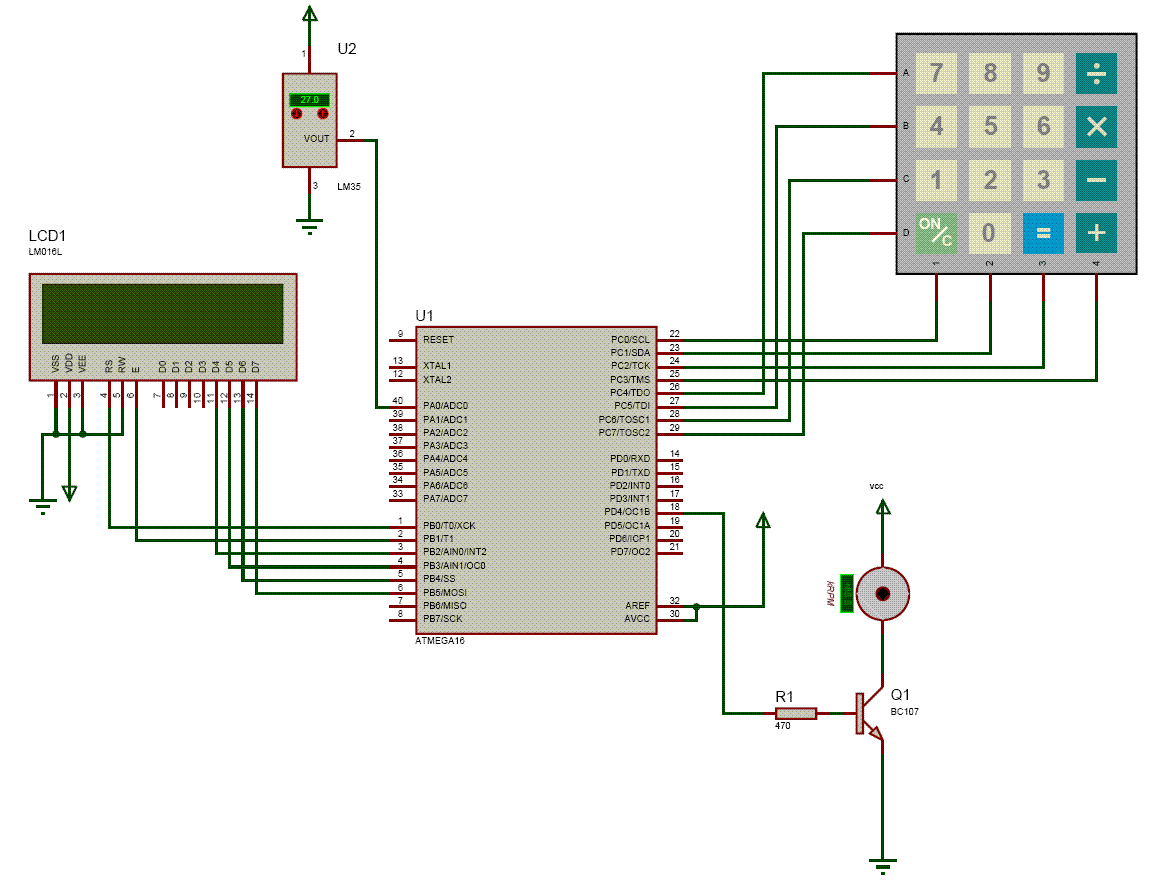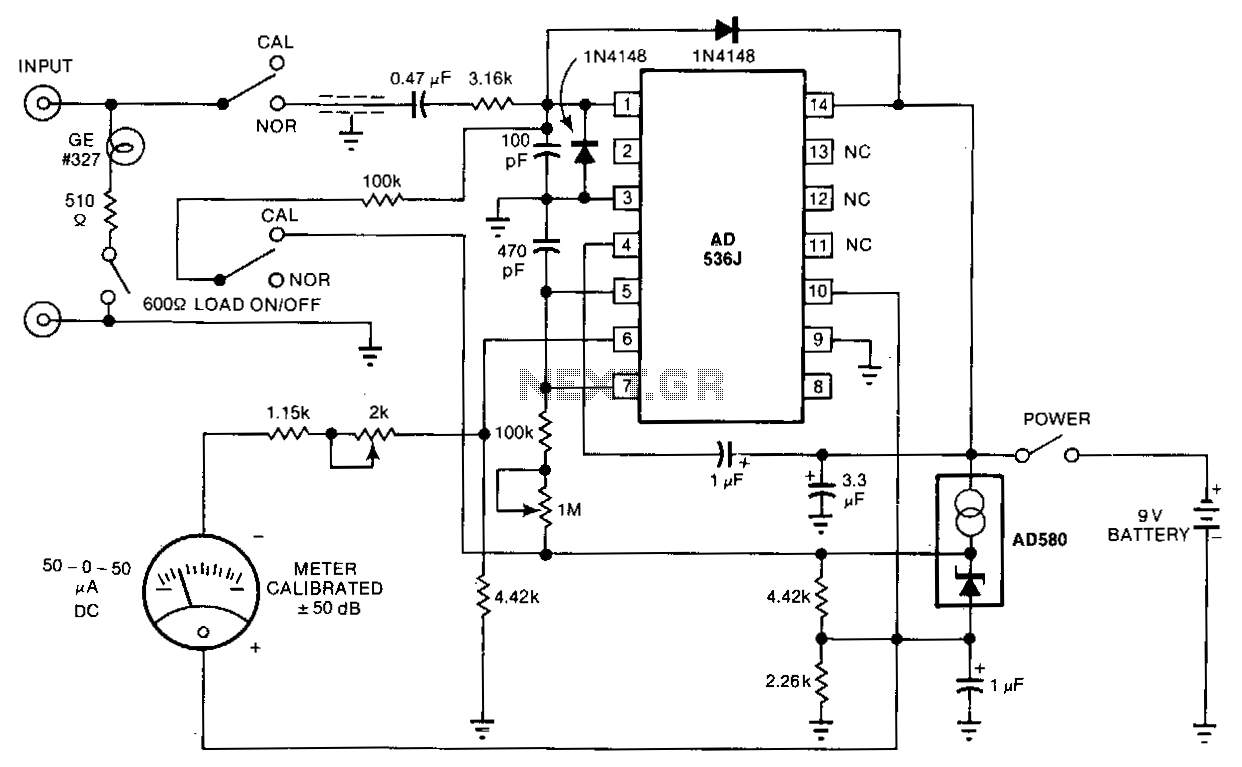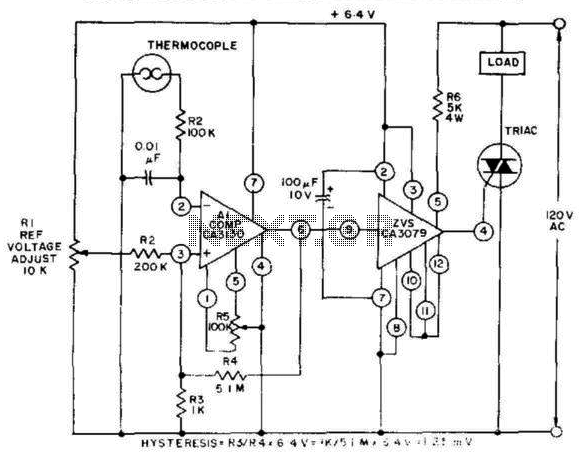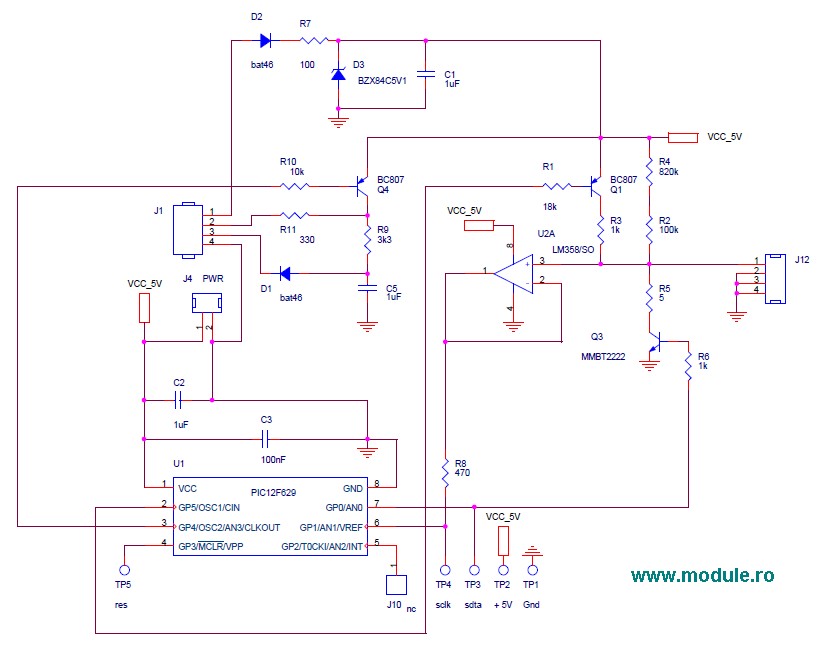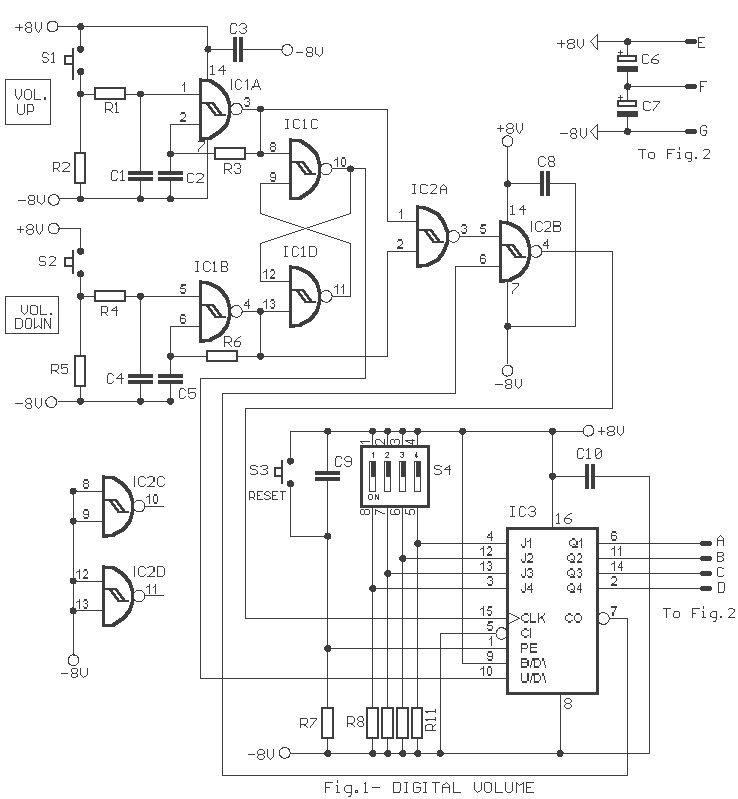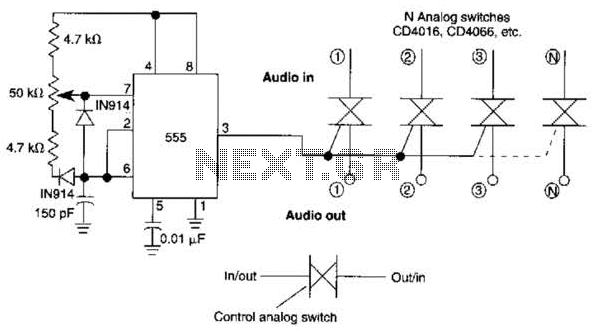
Temperature Probe for Digital Multi Meter
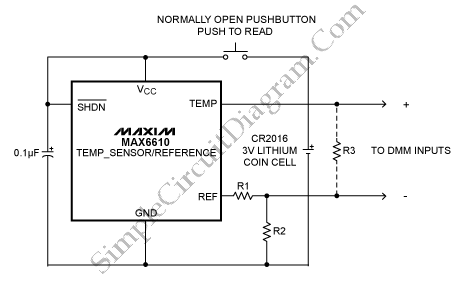
This is a simple temperature measurement probe circuit. This circuit measures temperature either on a PC board or at the probe tip.
The temperature measurement probe circuit is designed to accurately monitor temperature variations in various environments, including printed circuit boards (PCBs) and at the probe tip itself. The circuit typically incorporates a temperature sensor, such as a thermistor or an integrated circuit (IC) temperature sensor, which converts temperature changes into an electrical signal.
In a standard configuration, the temperature sensor is connected to an analog-to-digital converter (ADC) that digitizes the analog signal for further processing. The ADC output can be interfaced with a microcontroller or a digital display unit to provide real-time temperature readings. The choice of sensor will depend on the required temperature range, sensitivity, and response time.
Additional components may include resistors for setting reference voltages, capacitors for filtering noise, and operational amplifiers to enhance the signal strength. The circuit may also feature a power supply section, which could be a battery or an external power source, ensuring stable operation.
For applications requiring data logging or remote monitoring, the circuit can be expanded with communication interfaces such as I2C, SPI, or UART, enabling connectivity with other devices or networks. The layout of the PCB should minimize thermal interference and ensure proper placement of the probe for accurate readings.
Overall, this temperature measurement probe circuit serves as a fundamental building block for various applications in environmental monitoring, industrial automation, and consumer electronics.This is a simple temperature measurement probe circuit. This circuit measures temperature either on a PC board or at the probe tip to which contains the.. 🔗 External reference
The temperature measurement probe circuit is designed to accurately monitor temperature variations in various environments, including printed circuit boards (PCBs) and at the probe tip itself. The circuit typically incorporates a temperature sensor, such as a thermistor or an integrated circuit (IC) temperature sensor, which converts temperature changes into an electrical signal.
In a standard configuration, the temperature sensor is connected to an analog-to-digital converter (ADC) that digitizes the analog signal for further processing. The ADC output can be interfaced with a microcontroller or a digital display unit to provide real-time temperature readings. The choice of sensor will depend on the required temperature range, sensitivity, and response time.
Additional components may include resistors for setting reference voltages, capacitors for filtering noise, and operational amplifiers to enhance the signal strength. The circuit may also feature a power supply section, which could be a battery or an external power source, ensuring stable operation.
For applications requiring data logging or remote monitoring, the circuit can be expanded with communication interfaces such as I2C, SPI, or UART, enabling connectivity with other devices or networks. The layout of the PCB should minimize thermal interference and ensure proper placement of the probe for accurate readings.
Overall, this temperature measurement probe circuit serves as a fundamental building block for various applications in environmental monitoring, industrial automation, and consumer electronics.This is a simple temperature measurement probe circuit. This circuit measures temperature either on a PC board or at the probe tip to which contains the.. 🔗 External reference
